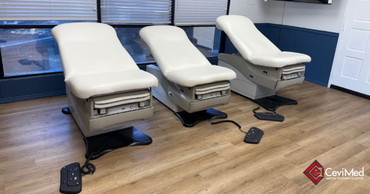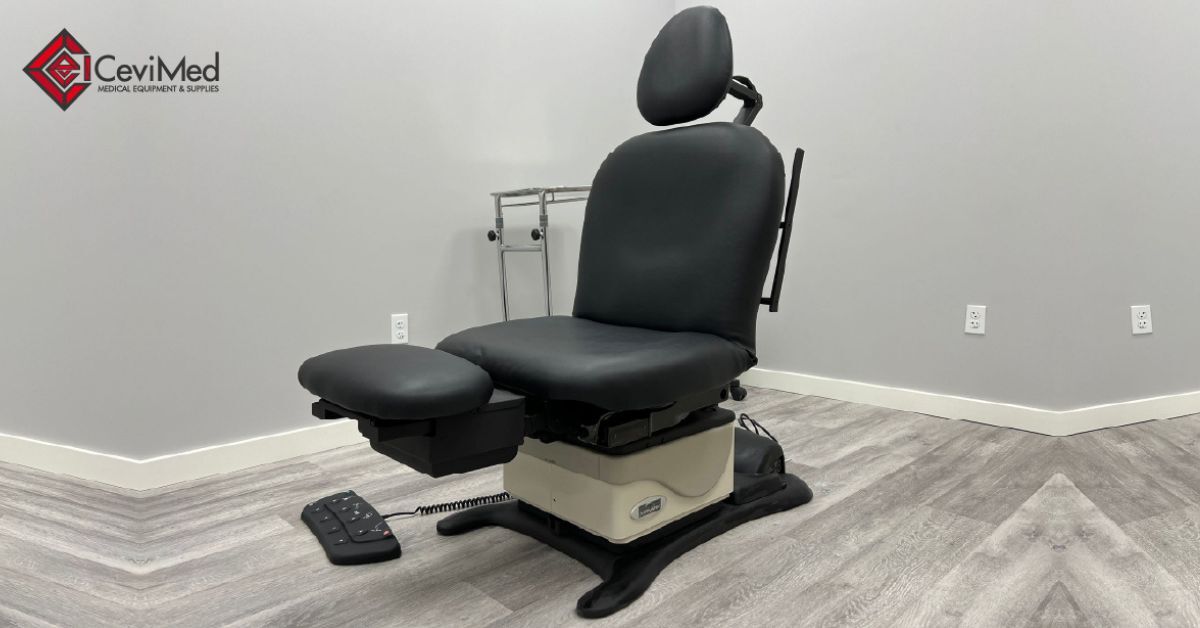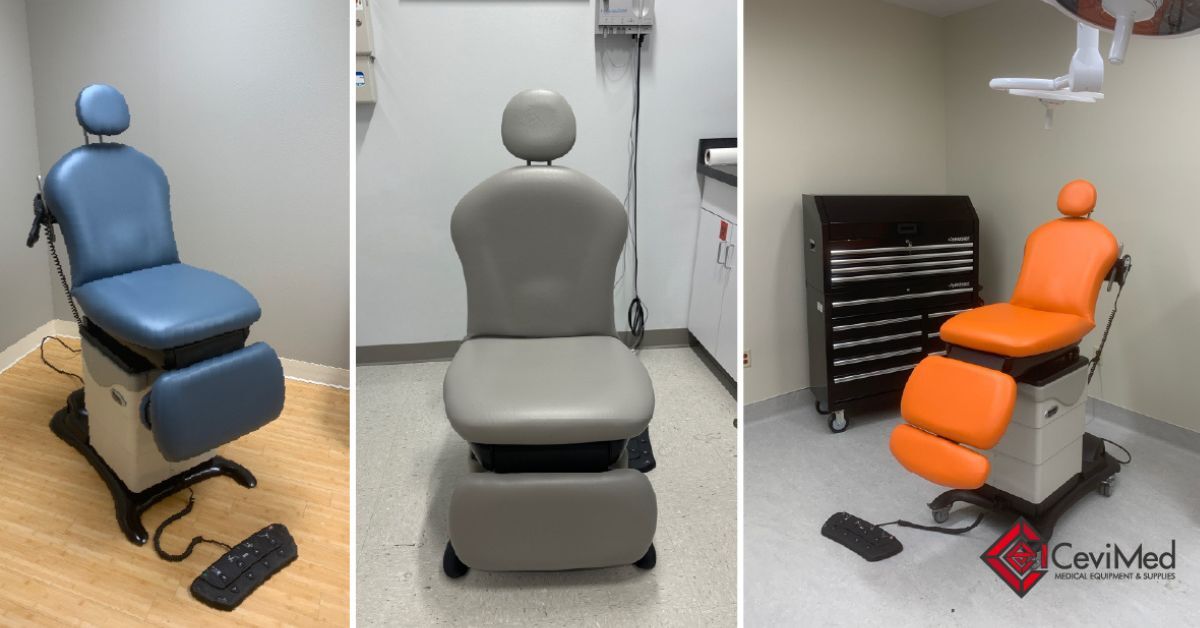
7 Signs It’s Time To Replace Your Exam Table
Posted by Cevi Med on 16th Sep 2025
Of all the pieces of furniture in your exam room, none carries more weight than the exam table. It contributes to patient comfort and provides a stable, accessible surface for examinations, whether it’s checking vitals, conducting procedures, or just giving patients a place to relax during their visit.
A well-built exam table can serve your practice for many years, but every piece of medical equipment eventually reaches the end of its useful life. Your table might become uncomfortable for patients, develop tears and holes in the upholstery, or start malfunctioning in ways that affect both safety and efficiency. Sometimes, the decline happens gradually, and this can make it difficult to pinpoint exactly when replacement becomes necessary.
How do you know if your table still has life left in it or if it’s time to invest in something new? The decision ultimately rests with you, but recognizing the signs it’s time to replace your exam table can help you make the call. Watch for these telltale indicators that suggest your faithful exam table may be ready for retirement.
Visible Wear and Tear on Upholstery
The upholstery on your exam table endures a lot day after day. Patients of all sizes sit, lie down, and move around on the surface, which gradually wears down the material. Small scuffs and minor discoloration might be manageable, but deeper issues tell a different story.
Look for cracks that expose the padding underneath, tears that create sharp edges, or areas where the vinyl has completely worn away. These problems create hygiene concerns since bacteria can hide in damaged surfaces, and they also present a poor image to patients who expect clean, professional equipment.
You can clean or touch up minor scuffs with repair kits, but if the upholstery has deep tears or extensive damage across multiple areas, it’s likely time for a replacement. When tears keep expanding with use, it makes more sense to replace the upholstery rather than trying to cover up what is beyond repair.
Structural Instability and Wobbling
A stable exam table provides confidence for both you and your patients. Any wobbling, shaking, or instability creates safety risks and makes examinations more difficult to perform accurately.
Test your table by applying gentle pressure from different angles. Does it rock back and forth? Do the legs feel loose or uneven? Can you hear creaking sounds when weight shifts on the surface? These symptoms often point to worn joints, loose bolts, or damaged support structures.
Some wobbling issues stem from loose hardware that you can tighten with basic tools. Check all visible bolts and connections first. If tightening doesn’t solve the problem, or if the wobbling returns quickly after repairs, the underlying structure may have degraded beyond simple fixes.

Malfunctioning Adjustment Mechanisms
Modern exam tables offer various adjustment options to change the height, reposition the backrest, and extend the leg support. These mechanisms should operate smoothly and hold their positions securely.
Pay attention to how your table responds to adjustment attempts. Does the height mechanism stick or require excessive force? Does the backrest slip down gradually after you set it? Do adjustment handles feel loose or fail to engage properly?
Sometimes, lubrication or minor repairs can restore smooth operation to these mechanisms. But if multiple adjustment features are failing, or if the same problems keep returning despite repairs, the internal components may be too worn to function reliably.
Hygiene and Cleaning Challenges
Medical environments demand the highest standards of cleanliness, and your exam table must support these requirements. Surfaces should be easy to clean and disinfect between patients.
Examine your table for areas where dirt, germs, and debris collect despite regular cleaning efforts. Cracks, crevices, and damaged surfaces create hiding spots for contaminants that standard cleaning procedures might miss. If you find yourself spending excessive time trying to clean the table, or if certain areas never seem to get truly clean, the surface integrity has likely been compromised.
Tables with intact, smooth surfaces clean quickly and thoroughly with standard disinfectants. When cleaning becomes a struggle, patient safety and infection control standards may be at risk.
Patient Comfort Complaints
Your patients’ comfort directly affects their experience and willingness to return to your practice. An uncomfortable exam table can make routine appointments feel unpleasant and may even interfere with your ability to conduct thorough examinations.
Listen to what patients tell you, both directly and through their body language. Do they shift around frequently as they try to find comfortable positions? Do they comment about the table feeling too firm, too soft, or uneven? Are elderly patients having difficulty getting on or off the table?
Some comfort issues relate to padding that has compressed over time, as this compression reduces its ability to provide adequate cushioning. Other problems stem from surface irregularities or structural factors that create pressure points or unstable areas.

Outdated Safety Standards
Medical equipment safety standards evolve over time, and older tables may lack features that are now considered standard for patient and practitioner safety.
Review your table’s safety features against current standards. Does it have proper weight capacity ratings clearly marked? Are there adequate safety straps or barriers where needed? Do electrical components (if any) meet current safety codes?
Tables manufactured many years ago might have been perfectly safe when new but may not meet today’s enhanced safety requirements. This becomes particularly relevant in practices that see a diverse patient population with varying mobility needs.
Frequent Repair Needs
When you find yourself calling repair technicians repeatedly for the same exam table, the costs and disruptions start to add up quickly. Frequent breakdowns also create scheduling challenges and may leave you without a functional table when patients need care.
Track how often your table requires professional repairs and calculate the associated costs. Consider both the direct expense of parts and labor, plus the indirect costs of appointment delays or cancellations.
A reliable exam table should operate for months or even years between major repairs. If your table needs attention every few weeks, replacement becomes more economical than continued repairs.
Recognizing the signs it’s time to replace your exam table protects both your patients and your professional reputation. Don’t let a failing table undermine the quality care you work hard to provide.
Tables that consistently show multiple warning signs have reached retirement age. Whether yours suffers from structural instability, hygiene challenges, or comfort problems, continuing to use compromised equipment puts patients at risk and reflects poorly on your practice.
If you need a replacement table, Cevi Med offers an excellent selection of used examination tables from trusted brands like Midmark. These expertly refurbished tables deliver like-new performance at a fraction of the cost of brand-new equipment. Browse our inventory to restore full functionality to your practice without compromising your budget, and contact us with any questions about our offerings.
